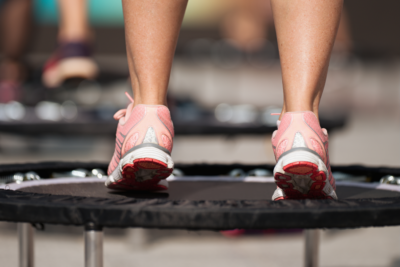POSTPARTUM CASE STUDY: Treating Urinary Incontinence
POSTPARTUM CASE STUDY: Treating Urinary Incontinence
This Case Study was submitted by Marjean Starr, a DPT and Certified Birth Healing Specialist located in Colorado.
Introduction: Client is a 38 year old female with 2 children. She came in for urinary incontinence. The urinary incontinence had gotten to the point that she was leaking multiple times a day and wearing pads. She could not exercise. Her mother has the same issue and the client shared that her motivation for seeking treatment was that she did not want to end up in diapers.
Client History: Client is a 38 years old female with 2 children. The children are 6 and 8 years old. Her first birth was 28 hours long and she actively pushed for 2 hours. The client was induced for her second birth and baby came out in 3 pushes. She had an epidural with both labors and gave birth to both of her children while laying on her back.
Assessment and Findings Contributing to Urinary Incontinence: When assessing the body, innominate rotation was present. She presented with signs of being in the open birthing pattern: right sacral rotation, up slip, right sacral shear and right ischium splay. Decreased spring and mobility of all pelvic bones on the right was also present. She had shallow breath down to belly only and rib flare. She presented with decreased ability to activate her core muscles and there was no coordination between the core and pelvic floor. Diastasis recti was not present. Greater tension was present on the right side of her body including the pelvic floor. Client demonstrated a 3 out of 5 strength of the pelvic floor upon initial assessment prior to treatment.
Treatment of Urinary Incontinence: To address the findings contributing to urinary incontinence, right sacral rotation and shear correction were corrected. Muscle energy technique for closing the bones was used. Balancing the ilium and ischium technique was used. Softening of the ILA (inferior lateral angle of sacrum), ischial tuberosity, ilium and pubic bone were also required. This restored micro motion of each bone to help get the body out of the innominate rotation and open birthing pattern.
In addition, organ mobility was restored and organs were encouraged back to midline to remove some of the internal pressure resulting in urinary incontinence. This increased the client’s pelvic floor activation to a 4 out of 5. Client was then taught to “blow before you go” and intra abdominal pressure management including breath work and core activation with activity. We broke down the client’s daily activities and helped her learn when and how to activate her core and pelvic floor to support her organs.
Client Outcome: It took 6 visits for the client to return to jogging on a treadmill without leakage. The client was able to jump on a rebounder for 30 seconds without leakage. She shared that she was back to playing with her kids at the park and enjoying life, again. Throughout the treatments she was also teaching her sisters what to do as they are in a rural area and do not have access to pelvic health Physical Therapy. The client ended her treatments demonstrating automaticity of the core and pelvic floor. At the writing of this case study, she has not experienced incontinence for 2 weeks.
Want to Learn the Techniques Used to Treat Urinary Incontinence: To learn more about how to release the Open Birthing Pattern and additional postpartum patterns join the waitlist for Treating the Postpartum Pelvis, an online course coming in September 2023. In 3 hours of coursework, you will know how to assess and treat 3 of the most common postpartum patterns and be able to confidently treat your postpartum clients.
About the Author: This Case Study was submitted by Maryjean Starr, DPT. Maryjean is a Physical Therapist and Certified Birth Healing Specialist located in Colorado.

